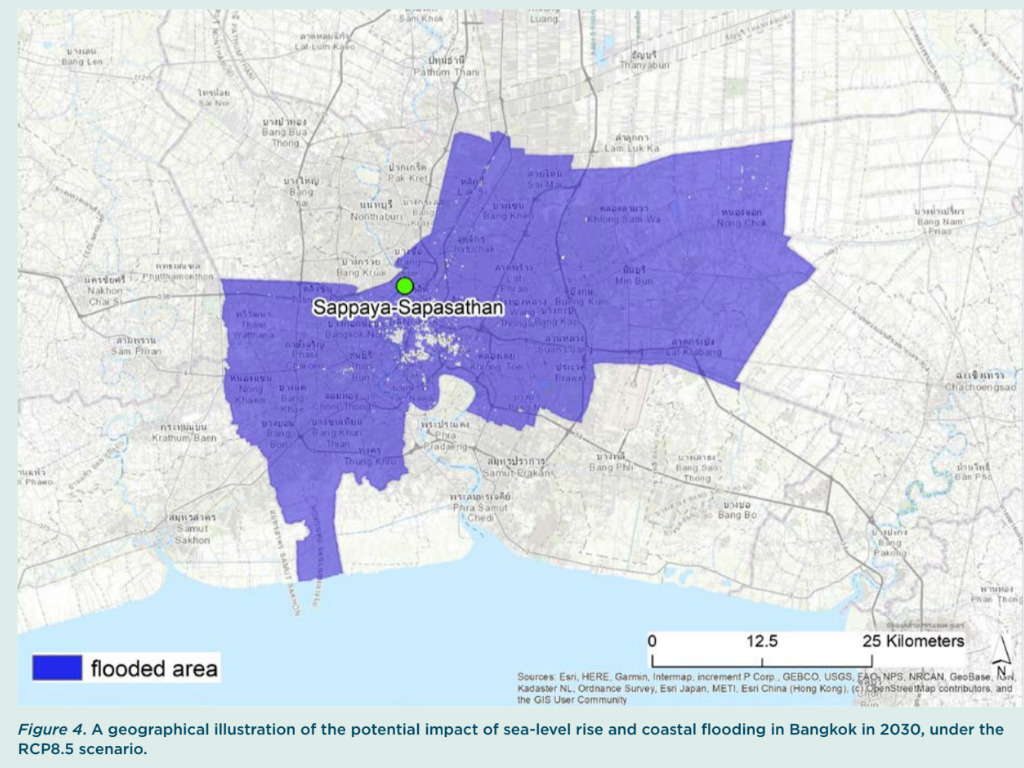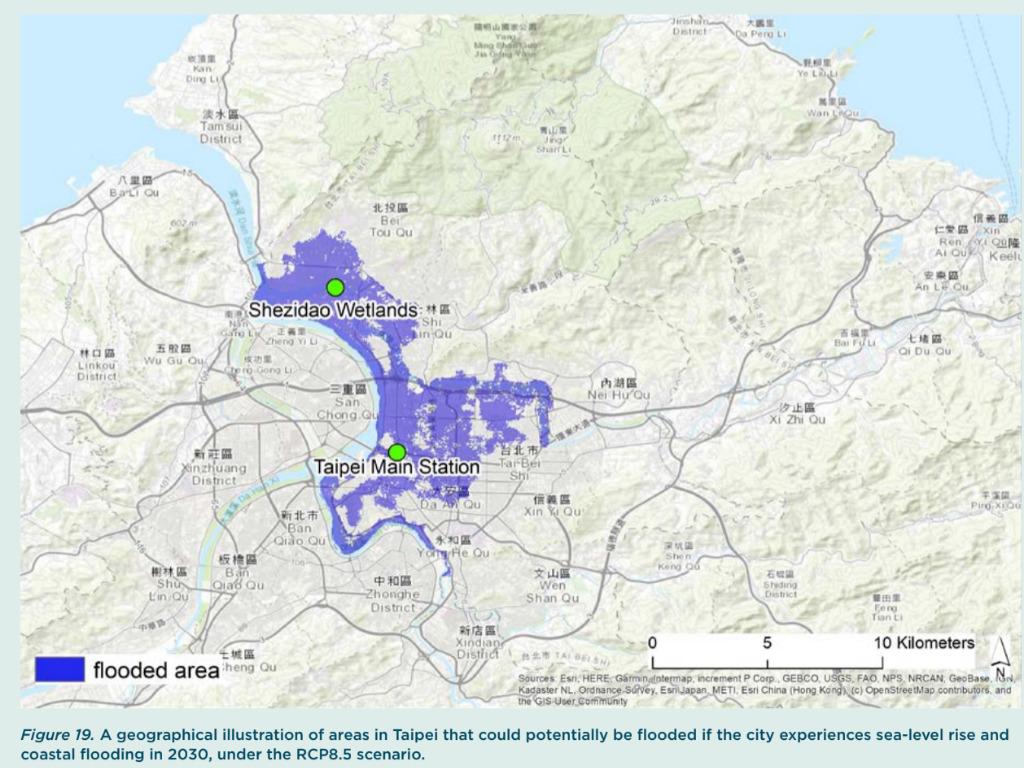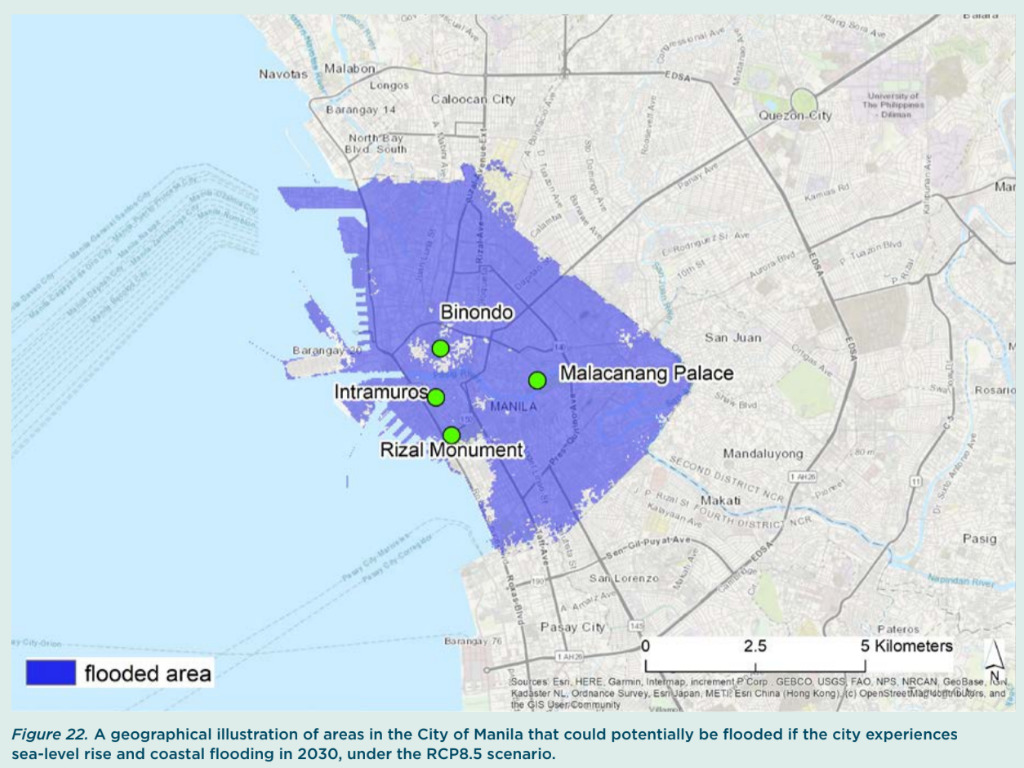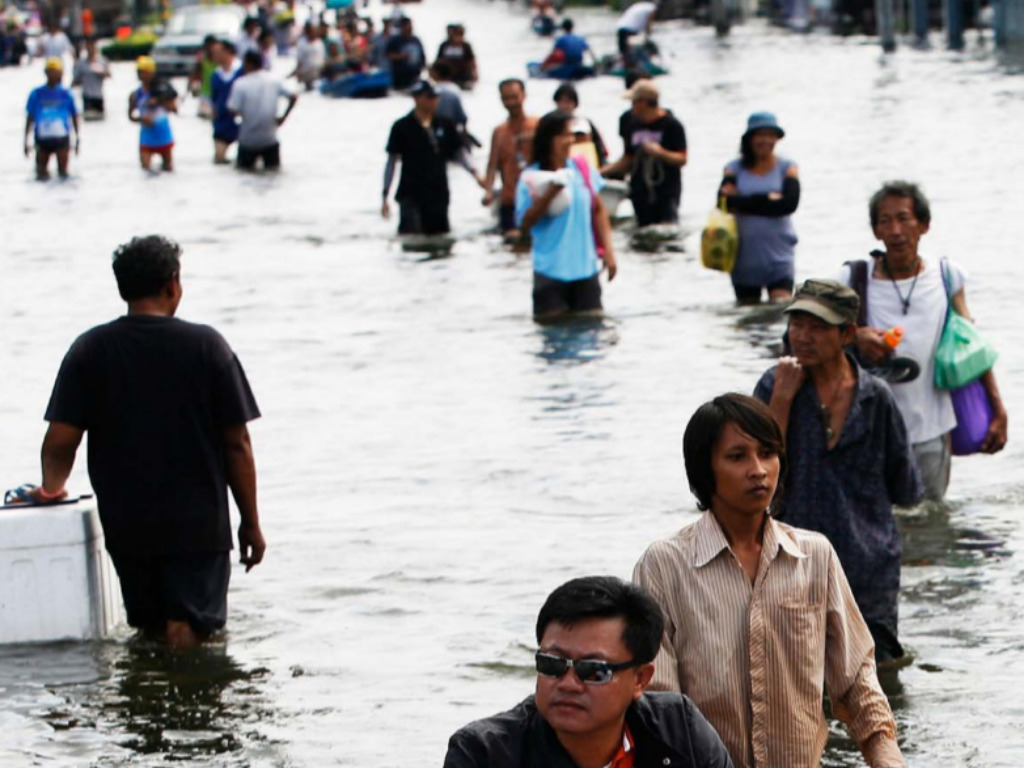5 Mins Read
A new report by non-governmental environmental organization Greenpeace East Asia analyzes the estimated economic impact of extreme rising sea levels in seven Asian cities in 2030. These cities are Hong Kong, Bangkok, Tokyo, Jakarta, Seoul, Tapei, and Manila.
This is a first of a kind analysis which uses high spatial resolution data to point out cities that are at high risks due to flooding. The report selected seven Asian cities as they are economic hubs and are situated on or close to the coastlines.
The findings reveal that in 2030, 15 million people across these seven cities will be residing in areas which are at risk of flooding due to rising sea levels and intensifying tropical storms. In addition, its gross domestic product (GDP) could possibly be severed affected due to this scenario.
Hong Kong
In Hong Kong, tropical cyclones are quite common causing storm surges which have seen the sea level exceed the tide level by over 3 metres. This means around 2% of the city’s land area is below the level to which seawater could rise if a 10-year flood occurs in 2030. This could impact 90,000 people with a loss of US$2.24 billion.
Bangkok
In Bangkok, over 96% of its land area is at risk of flooding. This land area includes residential and commercial spaces in the city’s center. Due to soft soils, heavy urbanization and land sinking, the sea-level rise and coastal flooding could affect 10.45 million people and a total of US$512.28 billion.
This impacted GDP (PPP) accounts for 96% of the city’s total GDP (PPP).

Jakarta
Jakarta experiences heavy flooding due to heavy rains, high river discharges, and high tides. Due to rising sea levels and sinking, around 17% of Jakarta’s total land area is at risk, with the northern part most at risk. From residential and commercial buildings to shopping malls along the coast, to the National Monument and Jakarta City Hall, all these areas will be severely affected.
As a result, 1.80 million lives will be affected and a total loss of US$68.20 billion is predicted.
“Within this decade, coastal cities in Asia are at high risk from rising sea levels and intensifying storms, impacting our homes, safety and livelihoods,” climate urgency project manager at Greenpeace East Asia, Mikyoung Kim said in a statement. “Not only is it long past time to halt the construction of all fossil fuel projects, but governments must implement increased flood control and early warnings. Existing climate commitments, including nationally determined contribution targets, are insufficient to avert the risk of severe coastal flooding.”
Read: Climate Crisis: 30 Dead & Thousands Evacuated Due To Jakarta Flash Floods
Tokyo
Here, around 4% of the land area is at risk with the eastern part of the city especially, between Arakawa River and Edogawa River, to be affected by flooding. Some of the low-lying areas include the Koto 5 Wards – Sumida, Koto, Adachi, Katsushika and Edogawa, where 70% of land area is already under sea level.
Several other areas at risk are Kasai Rinkai Park, which is set up on reclaimed land on the shoreline of Tokyo Bay, and riverparks along the Arakawa River, which are well-known destinations for travellers to watch the cherry trees bloom in spring.
Around 0.83 million people could suffer with US$68.19 billion to be impacted as a result.
Within this decade, coastal cities in Asia are at high risk from rising sea levels and intensifying storms, impacting our homes, safety and livelihoods
Mikyoung Kim, climate urgency project manager, Greenpeace East Asia
Taipei
According to the Central Weather Bureau (CWB) in Taiwan, an average of four typhoons cause landfall in the city every year. 17% of Taipei’s land area is below the level to which sea water could rise and a predicted 24% of Taipei’s total GDP at risk.
The Taipei Main Station, an important transport hub in northern Taiwan and the historic Datong District is to be affected by flooding. In addition, the western part of Taipei, particularly areas along the Tamsui River, would suffer damages more than other regions of the city if sea levels were to rise.
Read: Climate Change To Hit Asia The Hardest

Manila
In Manila Bay, the sea level is rising at 13.24 mm each year. On the other hand, due to the over-extraction of groundwater, Metro Manila is sinking by a rate of 10 cm annually.
Almost 87% of its land area is at risk putting 1.54 million people in danger. Historical landmarks and famous tourist destinations such as Binondo, Intramuros, and Malacanang Palace are predicted to be flooded. The Jose Rizal National Monument in Luneta Park, which is one of the largest urban parks in Asia and houses different species of wildlife is also set to be impacted.
The impacted GDP(PPP), a total of US$39.24 billion accounts for 87% of Manila’s total GDP(PPP).
Governments must immediately cancel all new coal-fired power plants in the pipeline and speed up the shift to clean and renewable energy. At the same time, the climate emergency is already here, and we need to strengthen disaster management planning and our response to climate impacts
Mikyoung Kim, climate urgency project manager, Greenpeace East Asia

Kim added: “Governments must immediately cancel all new coal-fired power plants in the pipeline and speed up the shift to clean and renewable energy. At the same time, the climate emergency is already here, and we need to strengthen disaster management planning and our response to climate impacts. Huge swaths of our cities are at risk of being inundated by floods, and we can’t afford to wait.”
Seoul
In Seoul, around 3% of its land area is at risk, with the western part of Seoul, mainly the Gangseo-gu on the Southern bank of the Han River and both banks of the Anyangcheon river to be flooded.
Apart from this, the northwestern edge of Gimpo International Airport and the Gangseo Marsh Ecological Park which is home to migratory bird species is at risk.
At the moment, the present climate plans are inadequate to tackle these risks of severe coastal flooding. Governments and companies need to act immediately by halting all coal-financing. They need to shift to renewable energy sources on a global level keeping the global temperature rise within 1.5 degree celsius.
Read: Our Oceans Are Heating Up, And Worsening The Climate Crisis…Can We Fix It?
Lead image courtesy of Sataporn Thongma/Greenpeace.




